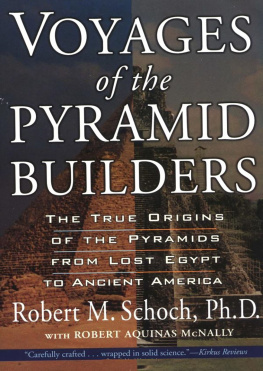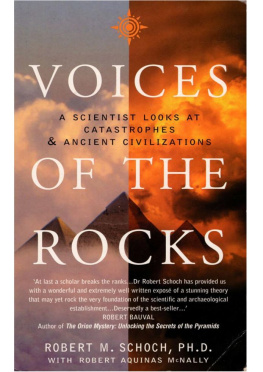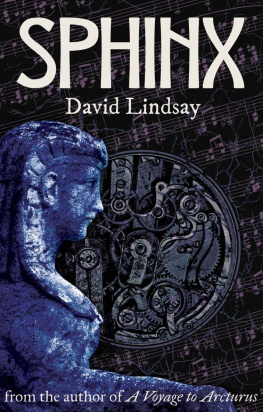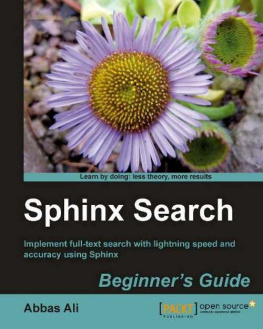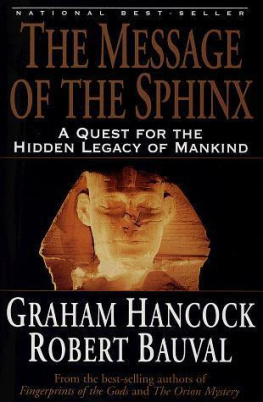Robert M. Schoch - Origins of the Sphinx: Celestial Guardian of Pre-Pharaonic Civilization
Here you can read online Robert M. Schoch - Origins of the Sphinx: Celestial Guardian of Pre-Pharaonic Civilization full text of the book (entire story) in english for free. Download pdf and epub, get meaning, cover and reviews about this ebook. year: 2017, publisher: Inner Traditions, genre: Religion. Description of the work, (preface) as well as reviews are available. Best literature library LitArk.com created for fans of good reading and offers a wide selection of genres:
Romance novel
Science fiction
Adventure
Detective
Science
History
Home and family
Prose
Art
Politics
Computer
Non-fiction
Religion
Business
Children
Humor
Choose a favorite category and find really read worthwhile books. Enjoy immersion in the world of imagination, feel the emotions of the characters or learn something new for yourself, make an fascinating discovery.

- Book:Origins of the Sphinx: Celestial Guardian of Pre-Pharaonic Civilization
- Author:
- Publisher:Inner Traditions
- Genre:
- Year:2017
- Rating:4 / 5
- Favourites:Add to favourites
- Your mark:
Origins of the Sphinx: Celestial Guardian of Pre-Pharaonic Civilization: summary, description and annotation
We offer to read an annotation, description, summary or preface (depends on what the author of the book "Origins of the Sphinx: Celestial Guardian of Pre-Pharaonic Civilization" wrote himself). If you haven't found the necessary information about the book — write in the comments, we will try to find it.
Contrasts what Egyptologists claim about the Sphinx with historical accounts and new research including reanalysis of seismic studies and updates to Schochs water weathering research and Bauvals Orion Correlation Theory
Examines how the Sphinx is contemporaneous with Gbekli Tepe, aligned with the constellation Leo, and was recarved during the Old Kingdom era of Egypt
Reveals that the Sphinx was built during the actual historical Golden Age of ancient Egypt, the period known in legend as Zep Tepi
No other monument in the world evokes mystery like the Great Sphinx of Giza. It has survived the harsh climate of Egypt for thousands of years and will remain long after our own civilization is gone. According to orthodox Egyptology, the Sphinx was built around 2500 BCE as a memorial to the pharaoh Khafre. Yet this fact has scant to no supportive evidence. When was the Sphinx really built and, most importantly, why?
In this provocative collaboration from two Egyptology outsiders, Robert M. Schoch, Ph.D., and Robert Bauval combine their decades of research to show how the Sphinx is thousands of years older than the conventional Egyptological timeline and was built by a long forgotten pre-Pharaonic civilization. They examine the known history of the Sphinx, contrasting what Egyptologists claim with prominent historical accounts and new research, including updates to Schochs geological water weathering research and reanalysis of seismic studies. Building on Bauvals Orion Correlation Theory, they investigate the archaeoastronomical alignments of the monuments of the Giza Plateau and reveal how the pyramids and Sphinx were built to align with the constellations of Orion and Leo. Analyzing the evidence for a significantly older construction phase at Giza and the restoration and recarving of the Sphinx during the Old Kingdom era, they assert that the Sphinx was first built by an advanced pre-Pharaonic civilization that existed circa 12,000 years ago on the Giza Plateau, contemporaneous with the sophisticated Gbekli Tepe complex.
The authors examine how the monuments at Giza memorialize Zep Tepi, the Golden Age of legend shown here to be an actual historical time period from roughly 10,500 BCE through 9700 BCE. Moving us closer to an understanding of the true age and purpose of the Great Sphinx, Schoch and Bauval provide evidence of an early high civilization witnessed by the Great Sphinx before the end of the last ice age.
Robert M. Schoch: author's other books
Who wrote Origins of the Sphinx: Celestial Guardian of Pre-Pharaonic Civilization? Find out the surname, the name of the author of the book and a list of all author's works by series.

